Chinchillas are related to guinea pigs and porcupines. With short forelimbs and long, muscular hind legs, chinchillas resemble rabbits, but their ears are much shorter and rounder. They have large, black eyes and bushy tails. They have four toes on each foot, and the thin claws on each toe are surrounded by stiff bristles.
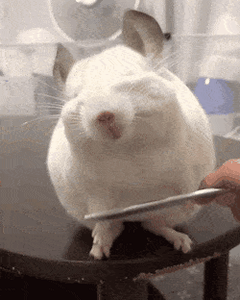

Chinchillas are typically 9 to 15 inches long, but the tail can add another 3 to 6 inches to their length. They generally weigh 1.1 to 1.8 lbs.
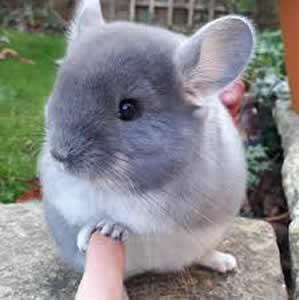
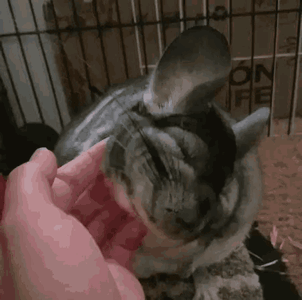
Chinchillas are crepuscular and nocturnal, which means they are very active at dawn or dusk and sleep during the day. They make their homes by burrowing in underground tunnels or nestling in rock crevasses. They are very social and live in colonies that consist of hundreds of chinchillas.
Habitat Chinchillas are covered in thick fur for a reason. In the Andes, they can live in elevations of about 9,800 to 16,400 feet. At those heights, it can be very cold — 23 degrees Fahrenheit is the average minimum temperature in some places. Chinchillas can tolerate freezing temperatures, but they cannot survive in temperatures higher than 80 F ; high temperatures and humidity can cause these rodents to suffer from heat stroke.

In their native habitats, chinchillas live in burrows or crevices in rocks. They are agile jumpers and can jump up to 6 ft. Predators in the wild include birds of prey, skunks, felines, snakes and canines. Chinchillas have a variety of defensive tactics, including spraying urine and releasing fur if bitten.
In nature, chinchillas live in social groups that resemble colonies, but are properly called herds. Herd sizes can range from 14 members up to 100, this is both for social interaction as well as protection from predators. They can breed any time of year.
Once a female chinchilla becomes pregnant, she will carry her young for about 111 days before giving birth. Females have babies twice a year. Each time they give birth, they will have one to six babies. These groups of babies are called litters. Individual babies are called kits.
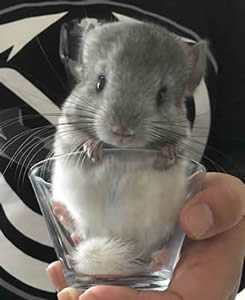
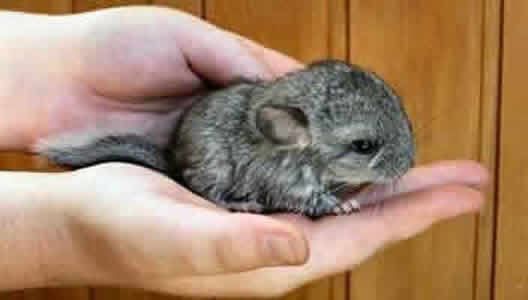
Newborn kits are born with hair and with their eyes open. They weigh only 1.2 ounces. The babies nurse for six to eight weeks, and when they're about 8 months old, the babies are ready to have offspring of their own. Generally, chinchillas live eight to 10 years, though some have lived as long as 20 years.
Diet Chinchillas are omnivores; they eat both plants and meat. Primarily, they eat grass and seeds, but they also eat insects and bird eggs when they get the chance.
The animals instinctively clean their fur by taking dust baths, in which they roll around in special dust made of fine pumice, a few times a week; they do not bathe in water. If they get wet, they should be dried off immediately or else their fur will grow fungus and they can possibly get a skin infection. Their thick fur resists parasites, such as fleas, and reduces loose dander.
The chinchilla has the densest fur of all mammals that live on land. The chinchilla is named after the Chincha people of the Andes, who once wore its dense, velvet-like fur. By the end of the 19th century, chinchillas had become quite rare after being hunted for their ultra-soft fur. Most chinchillas currently used by the fur industry for clothing and other accessories are farm-raised.
Fur industry
The international trade in chinchilla fur goes back to the 16th century. Their fur is popular in the fur trade due to its extremely soft feel, which is caused by the sprouting of 60 hairs (on average) from each hair follicle. The color is usually very even, which makes it ideal for small garments or the lining of large garments, though some large garments can be made entirely from the fur. A single, full-length coat made from chinchilla fur may require as many as 150 pelts, as chinchillas are relatively small. Their use for fur led to the extinction of one species, and put serious pressure on the other two. Though it is illegal to hunt wild chinchillas, the wild animals are now on the verge of becoming extinct because of continued illegal hunting. Domesticated chinchillas are still bred for fur.

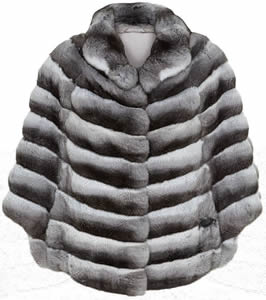
Both species of chinchilla are currently listed as Endangered by the IUCN Red List of Threatened Species due to a severe population loss approximated at a 90% global population loss over the last 15 years. The severe population decline has been caused by chinchilla hunting by humans. Until 1996, they were listed as Indeterminate on the IUCN Red List. In 2006, the long-tailed subspecies was listed as "Vulnerable" while the short-tailed subspecies was listed as "Critically Endangered". By 2008, both were listed as "Critically Endangered", and in 2016 they were reclassified as "Endangered" due to limited recovery in some areas.
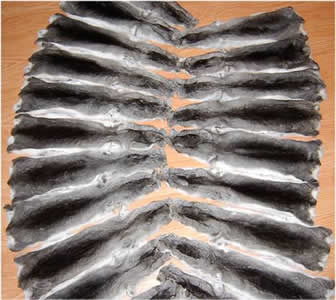
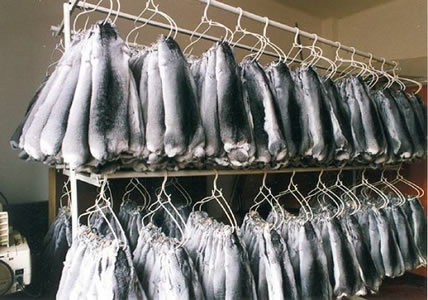
Chinchilla habitat in the Andes mountains of Chile Formerly, chinchillas occupied the coastal regions, hills, and mountains of Chile, Peru, Argentina, and Bolivia. Overexploitation caused the downturn of these populations, As early as 1914, one scientist claimed that the species was headed for extinction. Five years of fieldwork in Jujuy Province, Argentina, failed to find a single specimen. Populations in Chile were thought extinct by 1953, but the animal was found to inhabit an area in the Antofagasta Region in the late 1900s and early 2000s. The animal may be extinct in Bolivia and Peru, though one specimen found (in a restaurant in Cerro de Pasco) may hail from a native population.